Mediterranean honey varieties showcase the rich tapestry of Europe’s southern climates—from the sun-drenched lavender fields of Provence to the wild maquis of Corsica, and the resinous pine forests of Greece and Turkey. These honeys stand out not just for their irresistible aroma and complex flavours, but also for their antioxidant-rich profiles that align with the globally admired Mediterranean diet. Discover how terroir, protection labels, and traditional practices combine to make these honeys some of the most celebrated in the world.
# I. Mediterranean Honey: France
🍯 Provence Lavender Honey (PGI – France) — what makes it unique?
This variety of Mediterranean honey is harvested in a belt between Montélimar and Mont Ventoux, Miel de Provence carries both IGP and Label Rouge status, ensuring traceability and quality.
🇫🇷 IGP/PGI and Label Rouge Explained
Protected Geographical Indication (PGI) — known in French as Indication Géographique Protégée (IGP) — safeguards regional food names (like Miel de Provence). It mandates that at least one stage (production, processing, or preparation) occur in that region and that the product possess a reputation specifically tied to that locale.
Label Rouge — a French national quality seal— indicates superiority in taste, production methods, and consistency compared to standard products. To earn it, products undergo rigorous, government-approved inspection—covering floral sources, hive placement, harvesting techniques, and compliance with defined physicochemical and sensory benchmarks.
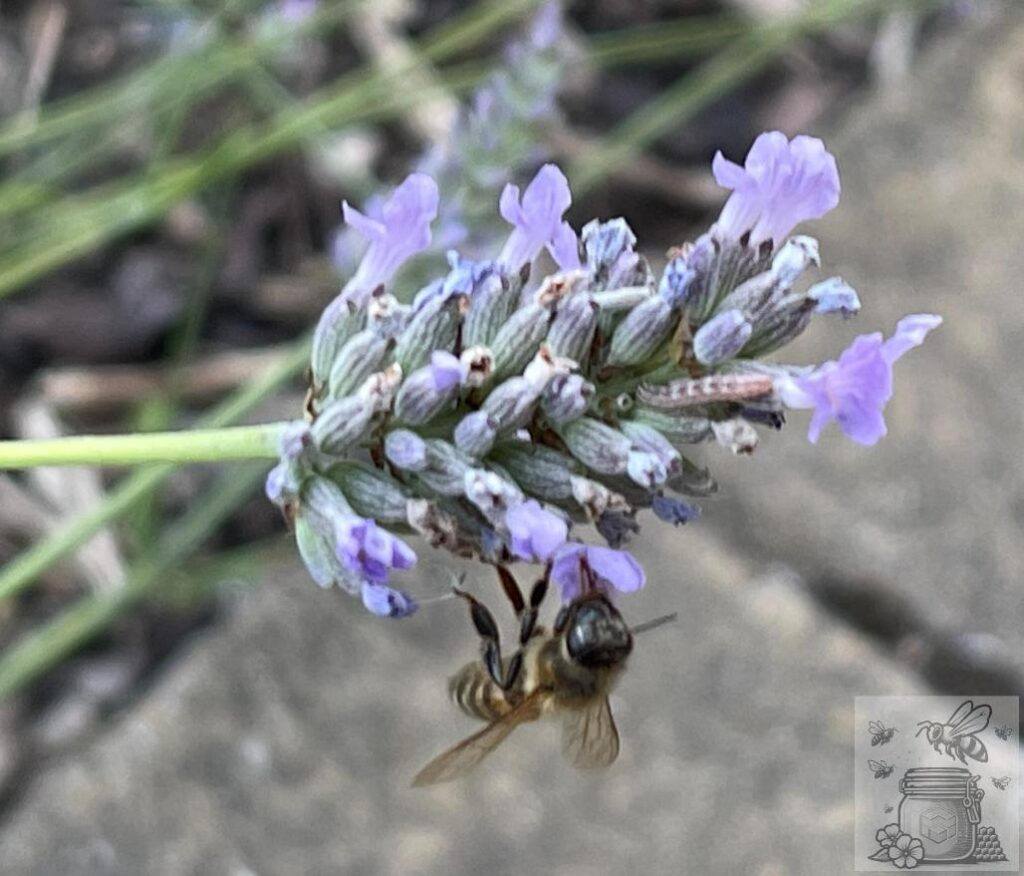
Delicate floral notes infused with lavender and sweet almond undercurrents — golden-amber in hue, often creamy in texture.
The honey is rich in flavonoids and polyphenols — offering antioxidant, anti-inflammatory, antiseptic, and antispasmodic effects.
Tasting Profile of Lavender Honey
- Colour & Texture: light golden to pale amber; often creamy if lightly crystallised, otherwise fluid and smooth.
- Aroma: distinctive lavender bouquet — floral, sweet, with hints of fresh herbs and light fruit blossom.
- Flavour: delicate and fragrant, with a well-balanced sweetness. Mild notes of almond, hay, and citrus; not overpowering. Clean floral finish with minimal acidity.
- Mouthfeel: silky, lightly coating the tongue, with a soothing, elegant finish.
Pairing Suggestions
🧀 Cheese
| Fresh Cheeses | goat cheese, ricotta, or labneh | The honey’s soft sweetness elevates the tanginess. |
| Aged Cheeses | brie or Tomme de Provence | Choose with lavender crusts for a regional match. |
| Creamy Blues | gorgonzola dolce or Saint Agur | Pair for a refined floral-sweet contrast. |
🍞 Breads & Breakfasts
- Drizzle over toasted brioche, sourdough, or buttery croissants.
- Spread on warm crepes or waffles with mascarpone or Greek yogurt.
- Stir into overnight oats or porridge with a few toasted almonds or berries.
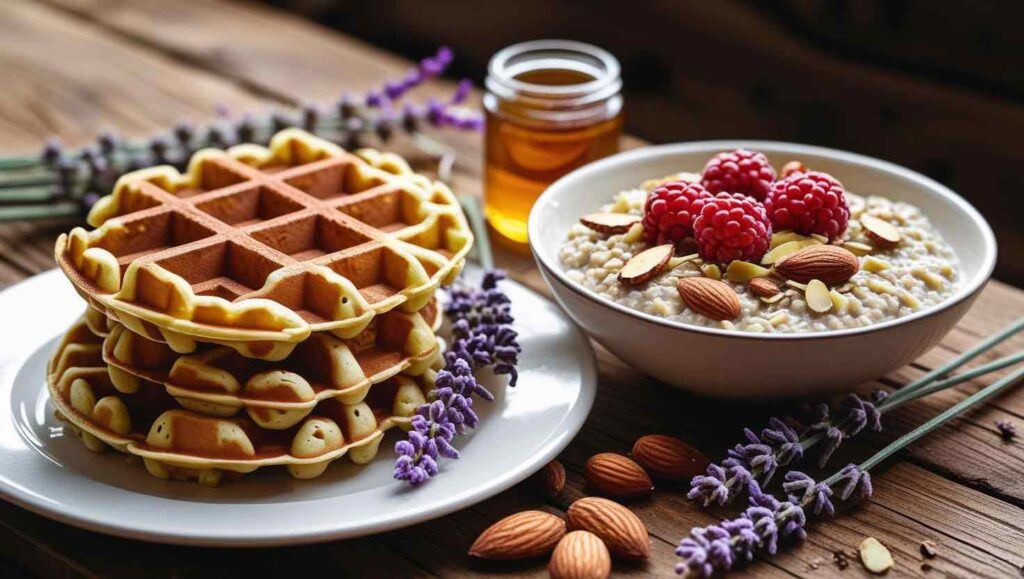
🫖 Tea & Beverages
| Green tea, white tea, or chamomile | Enhances floral notes without overpowering |
| Warm milk or herbal infusions | Add a spoonful for a calming evening drink |
| Provençal rosé wine | Pairs beautifully in vinaigrettes or aperitif dips |
🥗 Culinary Uses
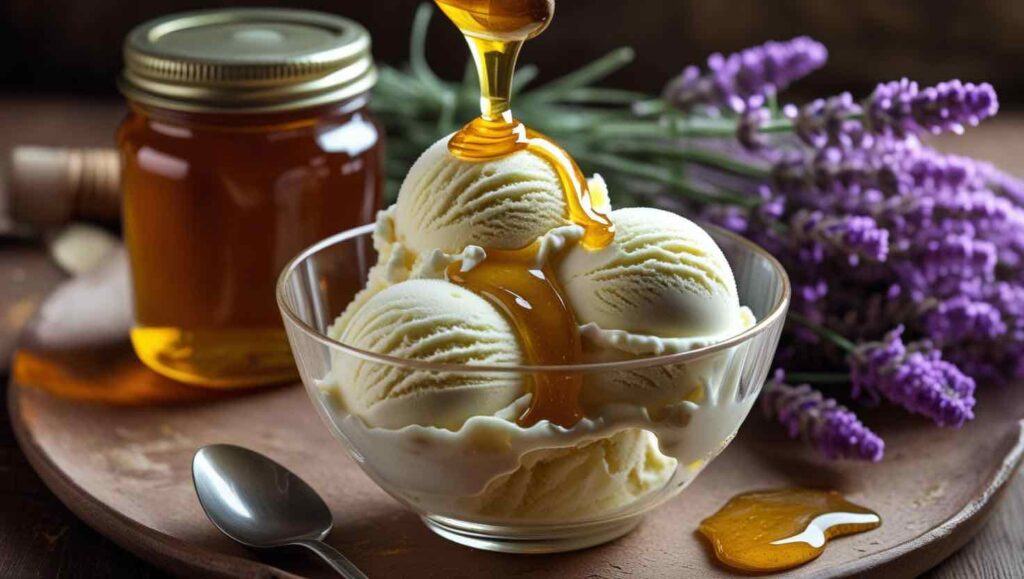
Salad Dressings: blend with lemon juice, mustard, and olive oil for a honey-lavender vinaigrette.
Desserts: perfect in panna cotta, lemon tarts, or fruit compotes.
Yogurt or Ice Cream: drizzle over plain Greek yogurt or vanilla ice cream for subtle sweetness.
🌿 Aromatic Pairings
- Complements herbs like thyme, rosemary, and fennel in sauces or marinades.
- Balances floral or herbal liqueurs in craft cocktails (e.g., lavender-honey gin fizz).
Tip for Use:
Avoid heating above 40°C to preserve its natural enzymes, aromatics, and polyphenol compounds.
🍯 Garrigue Honey (Miel de Garrigue) — hidden gem
Let me introduce you to another honey variety from the South of France which is not as well known as Provence Lavender honey but amazing, an underrated gem really.

Garrigue refers to the dry, rocky shrubland ecosystems found across southern France, especially in Languedoc-Roussillon, parts of Provence, and southern Rhône Valley.
The vegetation is rich in aromatic herbs and shrubs like: Thyme (Thymus vulgaris), Rosemary (Rosmarinus officinalis), Savory (Satureja spp.), Lavender (Lavandula spp.), Cistus (rockrose), Juniper, Broom, Wild mint, and Wild carrot.
Tasting Profile of Carrigue Honey
- Color & Texture: typically amber to dark amber; often viscous with slow crystallisation depending on floral ratio.
- Aroma: intensely aromatic — rich in wild herbs, slightly spicy and woody with a noticeable floral backbone.
- Flavour: robust and layered — herbal and savory with hints of citrus peel, dried grass, and light bitterness. Less sweet than lavender honey; sometimes with a salty or mineral edge from the dry soils.
- Mouthfeel: thick and warming, with a long herbal finish.
Pairing Suggestions
| 🧀 Cheese | Great with strong goat cheeses, Picodon, or Pélardon (from Languedoc). Works beautifully with aged sheep cheeses like Ossau-Iraty. |
| 🍞 Savory breads | Drizzle over olive focaccia, wholemeal sourdough, or serve alongside charcuterie boards. |
| 🥩 Meats | Mix into mustard glazes for lamb or rabbit. Add to herb marinades or brush over grilled vegetables. |
| 🍷 Wine | Perfect with southern French reds like Côtes du Rhône, Minervois, or Bandol rosé. |
| 🍃 Herbal teas & infusions | Pairs naturally with thyme, sage, or mint infusions, especially in winter. |
While Miel de Garrigue does not yet have PGI/Label Rouge status, it is considered a “honey with typicity” under French regional standards, and some producers label it under Apiculture de Terroir or Miel de France designations. Many producers are members of the INAO (National Institute of Origin and Quality) and follow voluntary traceability protocols.
🍯 Corsican Honeys (Mele di Corsica – AOP) — why is it so distinctive?
What Is AOP?
AOP stands for Appellation d’Origine Protégée (Protected Designation of Origin – PDO in English). It is the highest certification in the European Union for food products which production, processing, and preparation all occur in a specific region and rely on recognised local expertise and natural conditions.
In the case of Mele di Corsica (Corsican Honey):
- The entire process — from bee foraging to honey extraction — must take place exclusively on Corsican territory.
- The maquis (dense Mediterranean shrubland) provides a highly aromatic, wild floral nectar source unmatched elsewhere.
- Awarded AOP status in 1998, Mele di Corsica was the first honey in France to receive this level of protection.
Corsica’s rugged, sun-soaked terrain gives rise to one of the most diverse and intensely aromatic honeys in Europe.

Corsican honey is not a single type, but a series of seasonally harvested varieties, each expressing the island’s complex flora, microclimates, and elevations. For example, there are distinctive types of Corsican Maquis honey collected in spring, summer and autumn. These honeys are celebrated for their depth of flavour, antioxidant richness, and rustic elegance — a true reflection of Corsican terroir.
Tasting Profile of Corsican honey varieties
- Colour & Texture: varies by season — from light golden in spring to dark brown in autumn. Can be creamy or fluid depending on floral dominance.
- Aroma: wild and complex — herbal, woody, floral, and sometimes smoky, with notes of licorice, caramel, or dried herbs.
- Flavour: intense, layered, and unique. Spring varieties are mild and floral, while autumn types are bold, tannic, and bitter-sweet. Common taste notes: thyme (herbal), arbutus, also known as Strawberry tree (bitter-sweet), ivy (woody), cistus (balsamic), oak and chestnut (tannic).
- Mouthfeel: silky to resinous depending on harvest — long-lingering and palate-coating.
Pairing Suggestions
| 🧀 Cheese | – Perfect with Corsican sheep cheeses like brocciu. – Pairs well with aged hard cheeses (e.g. manchego, pecorino). – Bold autumn varieties complement blue cheeses or cheeses aged in chestnut leaves. |
| 🍞 Savory Applications | – Spread over country bread or walnut loaf. – Drizzle over roasted root vegetables or baked squash. |
| 🥩 Meat & Marinade | – Add to game or lamb marinades (with rosemary and juniper). – Blend with mustard or wine for wild boar glazes. |
| 🍷 Wine & Spirits | Pairs beautifully with Corsican reds (e.g., Niellucciu) or muscat-based apéritifs. |
| 🍋 Tea & Infusions | Stir into rosemary or thyme infusions, or lemon balm tisanes. |
| 🍰 Desserts | Use in chestnut cakes, honey-ricotta pastries, or to top fresh figs and yogurt. |
# II. Mediterranean Honey: Italy
Italy’s diverse climate and flora, from alpine meadows to Mediterranean coastlines, produce some of the world’s finest and most aromatic honeys. In the southern and coastal regions influenced by the Mediterranean climate, honeys often reflect the robust herbs, citrus groves, and wildflowers native to the landscape. The following honeys represent Italy’s distinctive Mediterranean terroirs.
🍯 Sulla Honey (Miele di Sulla) — ancient medicine
Region: Sicily, Calabria, Basilicata, southern mainland
In Lajatico (Tuscany), Sulla honey has been handcrafted since the 1800s, even noted in 1830s historical dictionaries. Traditionally used for soothing sore throats, digestive calming (gastritis), mild laxative & diuretic action, and skin care (acne treatment).
The honey is rich in trace minerals and vitamins — it contains iron, copper, zinc, magnesium, manganese, plus vitamins A, C, and B complex. These nutrients help support immune function, muscle recovery, and metabolic balance. Therefore Sulla honey is often marketed as an energising “athlete’s honey,” bridging flavour with wellness benefits.
Also, Sulla honey has a relatively low total polyphenol content (~60 mg GAE/100 g) compared to richer honeys like Thistle (~114 mg) and Manuka (~185 mg). Importantly, its antioxidants are highly bioaccessible after digestion, with only a ~7% reduction post-digestion — far more stable compared to Manuka (93% loss). Why this matters: it’s a fast, clean energy source with gentle antioxidant support — ideal for post-workout recovery and easy digestion. Plus, with a high fructose-to-glucose ratio, it’s slower to spike blood sugar, providing steady energy release.
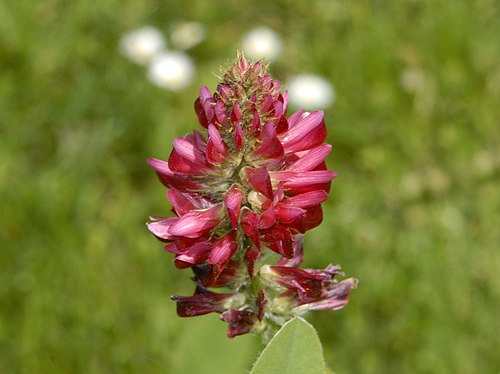
Sulla (Hedysarum coronarium) is a leguminous plant native to southern Italy, blooming in spring with crimson flowers.
Grown from wild plant in hilly Maremma regions, it is often cultivated on organic farms as part of crop rotation, enriching soils and attracting pollinators.
It produces a uniquely delicate and creamy honey.
Tasting Profile of Sulla honey
- Color & Texture: very light yellow to almost white when crystallised; creamy and smooth texture.
- Aroma: light and fresh with subtle floral notes — its distinctive scent is due to specific compounds such as norisoprenoids (for example, vomifoliol), methyl syringate, and benzene derivatives.
- Flavour: mild, delicately sweet with hints of hay, vanilla, and green almonds.
- Mouthfeel: soft, creamy and clean.
Pairing Suggestions
| 🧀 Cheese | Ricotta salata, mozzarella di bufala, mild goat cheese |
| 🫕 Breads & Breakfasts | Spread on toasted bread, croissants, or stirred into yogurt. |
| 🍵 Teas & Beverages | Light herbal teas (lemon balm, linden), or dissolved into warm milk. |
| 🍰 Desserts | Ideal for panna cotta, almond cakes, or citrus tart. |
🍯 Thistle Honey (Miele di Cardo) — rare, culturally significant honey
Region: Sardinia, Sicily
Derived from wild cardoon (artichoke thistles), this intensely aromatic honey is a Sardinian specialty, celebrated for its strong character and herbal complexity, as well as for liver-detoxifying and digestive benefits. It’s also considered a cardio-stimulant, aiding circulation and metabolism.
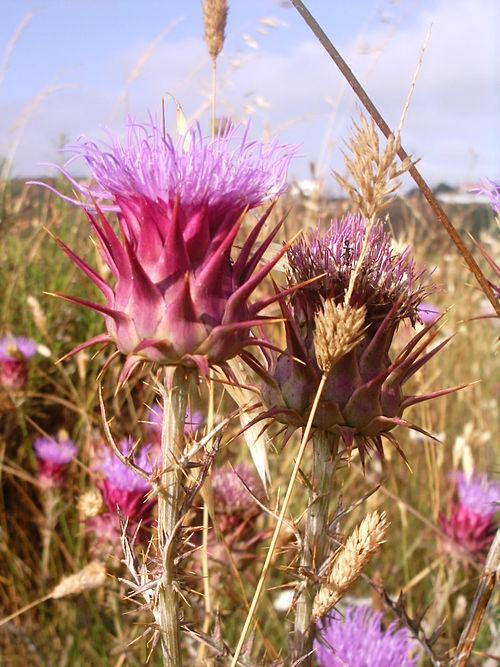
The honey contains bioactive compounds such as lumichrome and 3-phenyl lactic acid, linked to potent antioxidant and antityrosinase activity — suggesting potentials in skincare or dietary wellness. Recognised for higher phenolic content among Mediterranean honeys, it is considered to be potentially comparable to Manuka in antioxidant strength.
Ideal as a digestive aid post-meal and less ideal for high-BP (blood pressure) individuals due to its tyramine content.
Tasting Profile of Thistle honey
- Color & Texture: golden to amber; creamy or finely crystallised.
- Aroma: herbal, sharp, slightly balsamic, rich, intense with spicy undertones — notes of cinnamon, nutmeg, and wild thistle blossom.
- Flavour: strong yet smooth, persistent, with bitter undertones and notes of artichoke or green walnut.
- Mouthfeel: rich, slightly dry and lingering.
Pairing Suggestions
| 🧀 Cheese | Pecorino Sardo, aged caprino, or blue cheeses |
| 🍽️ Savory | Drizzle over roasted vegetables or use in anchovy vinaigrettes. |
| 🍇 Dessert | Pair for a contrast with fresh figs, poached pears, or ricotta tart. |
Tip: As with all raw honeys it is not recommended for hot drinks — it is best enjoyed at room temperature or slightly warmed to preserve enzymes and antioxidants.
🍯 Citrus Blossom Honey (Miele di Agrumi) — unique blend of citrus varieties
Region: grown in Italy’s sun-drenched Mediterranean south — mainly Sicily and Calabria, with Campania also contributing due to citrus-rich coasts.
Traditionally the honey is used as a natural cough suppressant and respiratory soother — especially prevalent in Calabria and Sicily. It is also known for antispasmodic and sedative qualities, making it a gentle remedy for colds, bronchial irritation, and insomnia.
Sicily’s Piana di Catania and Agrigento valleys produce notable organic and IGP blood orange blossom honey — prized for quality, cold-extraction, and artisan methods. Calabria’s citrus honey is cultivated under beekeeper consortia like “Amaroni Miele Italiani,” emphasising purity and provable provenance.
It’s Italy’s second most popular monofloral honey (after acacia), highly sought after and appreciated.

Nectar comes from orange, lemon, mandarin, bergamot, and grapefruit blossoms — often a blend of citrus varieties, making these true single-source citrus honeys rare.
This is one of Italy’s most fragrant honeys, widely used in pastries and drinks.
Tasting Profile of Citrus Blossom honey
- Color & Texture: light gold in liquid form; crystallises to ivory or pearly white, slightly opaque and creamy in texture.
- Aroma: delicate yet vivid floral-citrus aroma, with taste notes of orange blossom and lemon zest.
- Flavour: bright, fruity-floral, sometimes with light acidity or bitterness.
- Mouthfeel: smooth and luscious.
Pairing Suggestions
| 🧀 Cheese | Fresh goat cheese, robiola, burrata, scamorza, provolone, mozzarella, or ricotta. |
| 🐟 Savory glaze | for seafood like shrimp or grilled fish with citrus marinade. |
| 🍇 Desserts | Ricotta pastries, cannoli, and almond biscotti. |
| 🍞 Bread & breakfasts | Spread on toast or drizzled over citrus salads. Ideal with focaccia, citrus-walnut loaf, or classic Italian crostini. |
| 🍰 Desserts | Pairs well with lemon cakes, cannoli, almond biscotti, panna cotta. |
| 🍹 Drinks | Sweetens lemonade, iced teas, or prosecco cocktails. |
🍯 Strawberry Tree Honey (Miele di Corbezzolo) — rare bittersweet variety
Region: Western Sardinia
Called “the espresso of honeys,” it is sought after for its medicinal qualities and complex flavour. Locally known as miele amaro, Sardinian strawberry tree honey is celebrated for its strong bittersweet flavour, reflecting Sardinians’ preference for intense tastes. Historically adored by poets like Virgil and Horace, it remains a cultural treasure in Sardinia.
The floral source of this rare honey is the strawberry tree (Arbutus unedo).
Harvested in late autumn (September–November), bees collect nectar in cool weather, making production especially challenging.
It takes up to 7,000–8,000 bee foraging trips per kilo, compared to ~3,000 for typical honeys —contributing to its rarity and premium price.
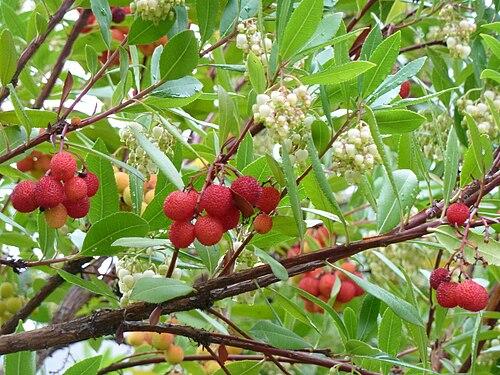
The honey has rich bioactive profile — homogentisic acid (HGA) is the dominant phenolic compound (~200–540 mg/kg), making up 50–60% of total phenols — an authentic chemical marker of strawberry tree honey. It contains potent antioxidants like quercetin, gallic and ascorbic acids — with higher levels than many other honeys, including some Manuka varieties. All that contributes to its notable health benefits, such as: strong antioxidant, antibacterial, anti-inflammatory, diuretic, and urinary antiseptic properties. Research suggests anticancer activity — notably cytotoxic to colon cancer cells, same as Manuka honey in lab studies. It also adds respiratory support, soothing coughs and easing bronchial discomfort.
Tasting Profile of Strawberry Tree honey
- Color & Texture: very dark brown; thick and slow-flowing.
- Aroma: earthy, woody, sometimes slightly medicinal.
- Flavour: starts sweet, then unfolds into deep bitterness with notes of coffee, cocoa, burnt sugar and astringent, earthy finish — a wine-like experience.
- Mouthfeel: resinous and intense.
Pairing Suggestions
| 🧀 Cheese | Sardinian Pecorino and Pane Carasau, strong blues or smoked cheeses. It enhances ricotta, mascarpone, or grana padano. |
| 🍽️ Savory | Use with game meats, roast pork, or balsamic reductions. |
| 🍒 Desserts | Excellent with dark chocolate or fig-based dishes, also in desserts like Seadas (honey-drizzled cheese pastries), ice cream, or white chocolate mousse. |
🍯 Rosemary Honey (Miele di Rosmarino) — delicately floral-herbal
Region: Coastal Tuscany, Liguria, Sardinia
The honey contains rosemary’s characteristic polyphenols — rosemary acid, carnosol, carnosic acid, kaempferol, and rosmarinic acid — known for anti-inflammatory, antimicrobial, and cognitive health properties.
Due to its moderate phenolic content (~316 mg GAE/kg) and solid antioxidant power (~245 µmol Trolox/kg) is well comparable to polyfloral or orange blossom honey.
Traditionally used as excellent digestive aid, soothing heartburn or indigestion — often taken by the spoonful after meals or in mild herbal tea. It is also noted for expectorant and balsamic properties, helpful for colds, bronchitis, and respiratory relief; can be used in light warm milk or infusions. Because it contains trace lithium, the honey is reputed to support mental clarity, mood stability, concentration, and potentially enhance memory. As natural antiseptic and wound healer it is used historically on minor cuts, scratches, and skin irritations. The honey is also used in skincare as a moisturising, emollient agent — studies show it improves hydration and skin barrier function.
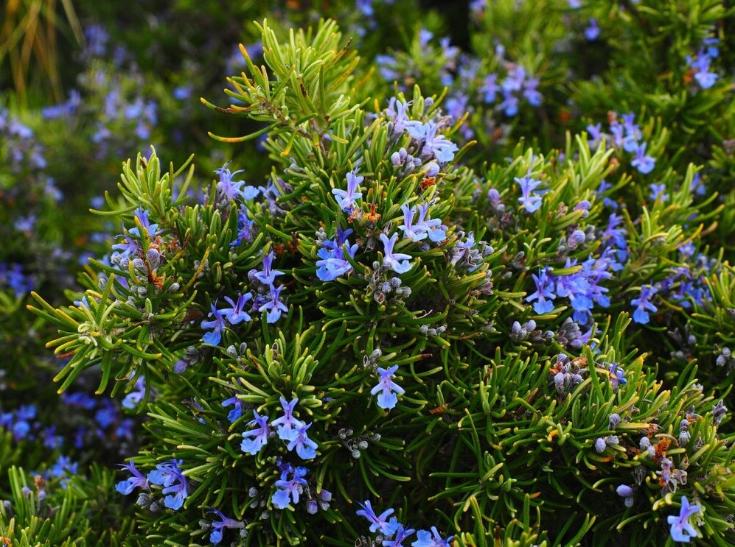
A mild honey with clean, floral-herbal notes, made from wild rosemary in coastal areas.
Tasting Profile of Rosemary honey
- Color & Texture: light pale gold when liquid; crystallizes quickly into fine ivory-white grains — soft and spreadable.
- Aroma: delicately floral-herbal with subtle evergreen and sea-air notes; some batches hint at almond and maritime fragrance.
- Flavour: mild, clean, slightly peppery — soft sweetness with whispering herbal-citrus touches and a barely salty nuance; short, lightly persistent finish.
- Mouthfeel: creamy and fine-textured.
Pairing Suggestions
| 🧀 Cheese | Crystal-thin sweetness complements fresh ricotta, burrata, pecorino, mild robiola, and lemon-infused desserts. |
| 🍞 Breads | Creamy texture and herbal aroma make it ideal for breakfast toasts, olive oil breads, and herb-filled pastries (think Ligurian focaccia). |
| 🌿 Herbal Teas | Great in chamomile, sage, mint, or simple lemon teas. |
# III. Mediterranean Honey: Greece
Greece boasts a kaleidoscope of honey types — ranging from aromatic thyme to rare fir and pine — all nurtured by its sun-soaked Mediterranean climate, mountainous terrain, and native floral biodiversity. Greek honeys rank among Europe’s finest, frequently celebrated in prestigious international competitions, such as London International Honey Award, Paris International Honey Award and Apimondia. In addition, Greek honey “Authentiko” from Melicreta-Leontarakis won the 2024 Great Taste Supreme Champion Golden Fork for their Cretan thyme honey. I would like to mention the following signature Greek honeys.
🍯 Thyme Honey (Thrimatomeno Meli) — very sought after variety, pleasant throat warmth sensation
Harvested from Crete, Peloponnese, and Halkidiki, thyme honey is often called the “king of Greek honeys” — highly prized, award-winning, and beloved in Greek food culture.
Beyond its culinary appeal, thyme honey is used as a natural wound healer, thanks to its strong antibacterial properties.
Popular in Greek households as a daily spoonful for wellness, mixed into tea, or brushed on bread.
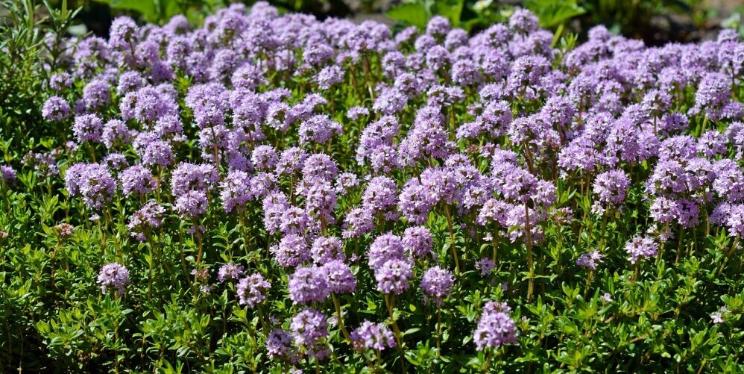
Exceptional Antimicrobial Power
Studies show Greek thyme honey (especially from islands like Crete, Kos, Rhodes) contains high phenolic compounds and hydrogen-peroxide, giving it antibacterial effects surpassing Manuka honey, including against MRSA and common pathogens like S. aureus, E. coli, and Candida.
Rich in Polyphenols
Greek thyme honey often features up to 300 mg/kg of phenolics, including flavonoids and phenolic acids like caffeic, chlorogenic, ferulic, apigenin, quercetin, and kaempferol — powerful antioxidants.
Therapeutic & Digestive Benefits
Traditionally it is consumed to soothe sore throats, coughs, and upper respiratory issues. The honey is also described as a metabolic and digestive tonic, sometimes used to ease constipation and support endocrine health.
Nutrient-Rich Composition
Packed with trace minerals like calcium, magnesium, iron, zinc, and manganese, plus essential vitamins A and C, making it a nutritional powerhouse.
Tasting Profile of Thyme honey
The honey is distinguished by subtle throat-warming sensation — it leaves a pleasant throat warmth or gentle burning sensation due to its natural acidity and enzymatic heat — a familiar quality appreciated by local consumers.
- Color & Texture: light amber to amber when liquid; may range darker to deep orange (especially from Crete). Crystallises within 6–18 months into fine to medium grains — silky, smooth texture.
- Aroma: intense and complex — floral-herbal with strong resinous notes, sometimes described as spicy, woody, reminiscent of magnolia or clove, with faint chemical or smoky hints.
- Flavour: bold and persistent — initial honeyed sweetness followed by thyme’s herbal-spicy zing and mild acidity. Some batches deliver faint notes of dates, raspberries, red currants, or fennel.
- Mouthfeel: full-bodied and slightly viscous — often described as thick, oily, and coating, leaving a warming or mildly piquant sensation on the throat.
Pairing Suggestions
| 🧀 Cheese & Appetisers | – Drizzle over creamy goat cheese, brie, or feta crostini — often garnished with walnuts or fresh thyme. – Bake feta with thyme honey, olive oil, fresh thyme sprigs, lemon zest, and a touch of pepper for an easy, bold Mediterranean starter. |
| 🥘 Savoury Dishes & Marinades | – Use as a glaze for roasted or grilled lamb, chicken, or pork—combine with olive oil, garlic, and fresh herbs for a classic marinade. – Try Greek-style honey-roasted carrots tossed in rosemary, honey, olive oil, and thyme — finish with crumbled feta on top. |
| 🍰 Dessert & Sweet Treats | – Enhance Persian-style or sesame baklava with thyme honey in place of ordinary syrup — adding depth and floral notes. – Drizzle over Greek yogurt parfaits layered with granola, fresh fruit, and add that signature herbal sweetness. |
| 🍵 Beverages & Teas | – Stir into warm herbal teas (lemon, chamomile, mint) for a restorative herbal-honey blend — great for soothing sore throats. – Sweeten black tea or morning brew with a teaspoon of thyme honey for rich, aromatic flavour. |
| 🥄 Breakfast & Snacks | – Spread on toast, pancakes, or oatmeal as a warming, aromatic topping. – Drizzle over fresh fruit like baked apples or roasted persimmons: often paired with labneh and thyme for a decadent, yet healthy snack. |
🍯 Fir Honey (Meli Elatis, also known as Menalou Vanilia Fir Honey) — a Greek PDO treasure, rare & seasonal
Unique Terroir & Origins

The nectar is collected exclusively in the Mount Mainalon range (Arcadia, Peloponnese) at elevations of 900–1,800 m, in native Abies cephalonica forests.
It was the first Greek honey to receive PDO certification, requiring at least 80% fir honeydew, with the remainder (<20%) from local wildflowers.
PDO standards specify regulated low moisture (14–15.5%), sugar content, and geographic authenticity.
The honey is produced only every 2–3 years, and only in small, tightly controlled quantities making it a collector’s-grade honey and luxury gift item.
Traditional extraction methods — cold centrifuge, no heat — used in small batches. Beekeepers often leave up to 40% honey in hives to ensure ecological balance.
The honey is rich in trace minerals (K, Mg, P, Fe, Ca), B vitamins, amino acids, and enzymes — boosting metabolic assimilation and electrolyte balance. Long used in Greek traditional medicine, it acts as a natural antiseptic and respiratory soother, calming digestive and throat discomfort. It’s claimed to be slower to spike blood sugar and may be suitable for controlled diets — some producers state it’s safe in moderation for diabetics.
Tasting Profile of Menalou Vanilia Fir honey
- Color & Texture: light brown with a pearly, vanilla-like sheen; thick, creamy consistency that crystallises very slowly.
- Aroma: intensely woody and balsamic with a subtle scent reminiscent of natural vanilla— not infused, but derived from fir honeydew.
- Flavour: rich and resinous, featuring caramel and pine undertones with warm vanilla notes and moderate sweetness.
- Mouthfeel: velvety, thick, and smooth — coating the palate with a luxurious, lasting finish.
Pairing Suggestions
| 🧀 Cheese | Aged and bold varieties — Manchego, pecorino, or strong feta — to balance the resinous sweetness with savory notes. |
| 🥖 Bread & Breakfast | Drizzle on buttered toast, pancakes, or stirred into oatmeal/granola for sumptuous morning richness. |
| 🍵 Teas & Drinks | Ideal in warm herbal teas (sage, thyme) or mulled wine, where vanilla and pine enhance seasonal warmth. |
| 🍖 Savory Dishes | Use as a glaze for roasted meats — such as lamb, pork, or chicken — to impart a sweet-savory caramelisation. |
| 🍮 Desserts | Drizzle over Greek yogurt, ice cream, or fresh fruit for a gourmet touch that elevates vanilla and caramel notes. |
🍯 Pine Honey (Pefkomelo / Perkomelo) — honeydew delight
Πευκόμελο (Pefkomelo / Perkomelo) translates in English simply to “pine honey.”
Classified as a honeydew honey, not derived from floral nectar but from the secretions of the scale insect Marchalina hellenica feeding on pine sap.
It accounts for approximately 60–65% of Greece’s total honey production — a dominant category in regions such as Thasos, Halkidiki, Evritania, Mount Pindus, and islands like Rhodes and Skopelos. The Thasos Pine Honey Cooperative (operating since 1973) is especially renowned — Thasos pine forests produce honey described as “better than Manuka,” and Thassos cooperatives have been awarded top prizes in the London Honey Awards.
Pine honey is exceptionally mineral-rich: high in calcium, magnesium, zinc, iron, copper, and other trace elements. It has proven antibacterial effectiveness — one study even ranked Greek organic pine honey highest in activity among 18 types tested. Traditionally it is used to soothe sore throats, support hemoglobin levels, and bolster resilient health during autumn/winter.
📌 Regional Notes: Thasos vs. Evritania
- Thasos: pine honey from Thasos is considered top-tier—mountainous terrain, clean air, and well-managed forests contribute to quality that even beats Manuka in awards .
- Evritania: also produces high-quality pine and fir honeys; the local pine woods in combination with fir groves support dual honey types.
Tasting Profile of Pine honey
- Color & Texture: dark amber, sometimes lighter in spring; liquid and viscous — low in glucose, which leads to a liquid texture that remains fluid for 18+ months.
- Aroma: distinctly woody and resinous with notes of sandalwood, pine needles, propolis, and a hint of iodine.
- Flavour: rich and subtly sweet, balanced by creamy caramel and vanilla undertones; spring batches can be lighter and more floral, while autumn yields deeper, spicier depth.
- Mouthfeel: thick and luxurious — sometimes described as buttery or oily, with a long, lingering finish.
Pairing Suggestions
| 🧀 Cheese | Ideal with smoked or hard cheeses (e.g., smoked gouda, kashkaval), feta, or traditional Greek manouri. |
| 🍞 Breakfast | Drizzle over buttered toast, Greek yogurt with walnuts, or morning granola. |
| 🥘 Savory dishes | Use in balsamic-glazed vegetables, roasted root veggies, mushroom risottos, or as a glaze for meats. |
| 🍵 Beverages | Perfect in herbal teas (pine needle, thyme), mulled wine, or simply stirred into warm lemon water. |
🍯 Heather Honey (from Halkidiki & Pelion) — luxury and rare “autumn honey“
Region: Halkidiki, Pelion
The honey is collected primarily from Erica species in mountainous coastal regions (Halkidiki peninsula) and lush slopes of Pelion — heather that thrives on rocky, acidic soils.
Known as a rare “autumn honey”, its limited harvest windows (1–3 months crystallised) make it one of Greece’s most prized honeys.
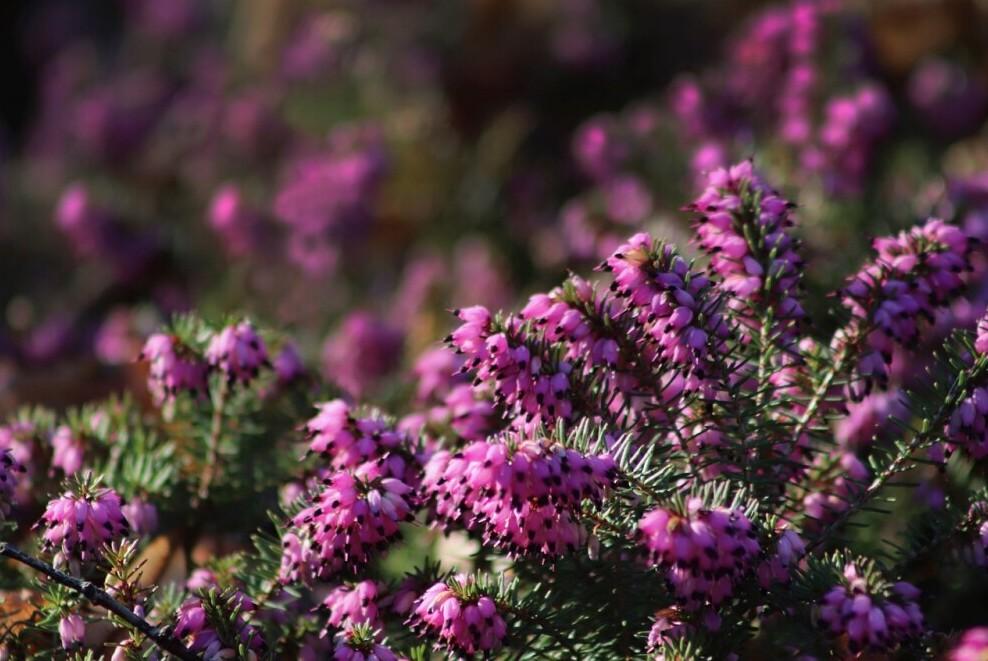
Why It’s Special
- The difficulty bees face accessing narrow heather blossoms makes it a challenging and artisanal harvest, enhancing its luxury appeal.
- Valued as a luxury honey on par with lavender or chestnut honeys in France, and featured in international taste awards.
It contains some of the highest phenolic (antioxidant) content among honeys, proven to prevent oxidative damage and show strong antibacterial activity. Traditionally used for immune support, fatigue recovery, digestive aid, anemia relief, and anti-inflammatory benefits — a daily spoonful is often recommended for natural restorative effects.
Tasting Profile of Heather honey
- Color & Texture: reddish-amber liquid transitioning to deep caramel or copper hues upon crystallisation; denser than most floral honeys.
- Aroma: rich floral notes with underlying caramel, toffee, and lightly spicy or resinous accents.
- Flavour: intense, with sweet-bitter carameliness, sometimes a tart fruit edge like red currant, and lingering mineral depth; the texture is often described as “luxuriously rich”.
- Mouthfeel: dense and creamy — coating the palate with a velvety, full-bodied finish.
Pairing Suggestions
| 🧀 Cheese | Pairs beautifully with strong blues, aged pecorino, or goat cheeses, offering an elegant salty‑sweet dynamic. |
| 🍮 Breakfast/ Dessert | Ideal drizzled over Greek yogurt, pancakes, chocolate desserts or walnut‑fruit pastries — enhances caramel notes. |
| 🍵 Teas & Wellness | Enjoy a spoonful in warm herbal teas (chamomile, sage) for immune-boosting and antioxidant benefits. Also pairs well with robust black tea. |
🍯 Wildflower Honey (Multifloral) — balanced floral–fruity flavour
What Makes It Unique
Collected by nomadic beekeepers migrating with the flowers, offering a taste of Greece’s rich spring and summer flora.

Also known as “mixed blossom honey,” it blends nectar from many wildflowers: sage, thyme, clover, linden, Paliurus, Phlomis, and others, depending on the season and location.
What Regions are Well-known for Wildflower Honey
- Macedonia (Macedonian slopes & Halkidiki): High-biodiversity honey from wild mountain meadows.
- Mani, Mt. Mainalon, Mt. Parnon, Northern Euboea: organic wildflower & forest honey blends — diverse spring flavours.
- Taygetus Mountains: artisan wild mountain flower honey — award-winning, with light caramel notes.
The honey is nutrient-rich: high levels of vitamins, trace elements, minerals, and amino acids — often exceeding typical mono-floral honeys. It is distinguished by balanced polyphenols containing flavonoids (e.g., luteolin, quercetin) that support antioxidant defense mechanisms in cells.
Tasting Profile of Wildflower honey
- Color & Texture: pale yellow to medium amber; smooth and fluid, but can crystallise into fine grains over time.
- Aroma: fresh floral bouquet with herbal undertones — often hints of sage, thyme, clover, and early-season meadow flowers.
- Flavour: well-balanced — light sweetness complemented by subtle fruitiness (pear, cantaloupe) and mild herbaceous notes.
- Mouthfeel: lush, silky, and clean; cascades like “liquid ribbon candy” — thick, but easy to drizzle.
Pairing Suggestions
| 🧀 Cheese | Ideal with soft fresh cheeses like ricotta, chèvre, burrata, or provolone — and even aged cheeses such as Parmigiano-Reggiano for a nuanced contrast. |
| 🍞 Breakfast | Drizzle over toast, bagels, yogurt, oatmeal, pancakes, or waffles for an elevated morning treat. |
| 🍇 Fruit | Pairs beautifully with apples, figs, fresh berries, or pears—try the classic combination of pear & Stilton plus honey. |
| 🍵 Beverages | Stir it into herbal teas (mint, chamomile, lemon balm) or even coffee for a smooth floral twist. |
| 🍰 Desserts & Baking | Use in muffins, cakes, or quick breads. It’s also delicious in honey cookies like melomakarona — the Greek Christmas favourite. |
🍯 Strawberry Tree Honey (Meli Kokkini) — a rare gourmet variety
The honey is primarily harvested in Mount Pelion, Western Greece, Epirus, and Mount Athos — regions with abundant native Arbutus unedo groves and rugged terrain.
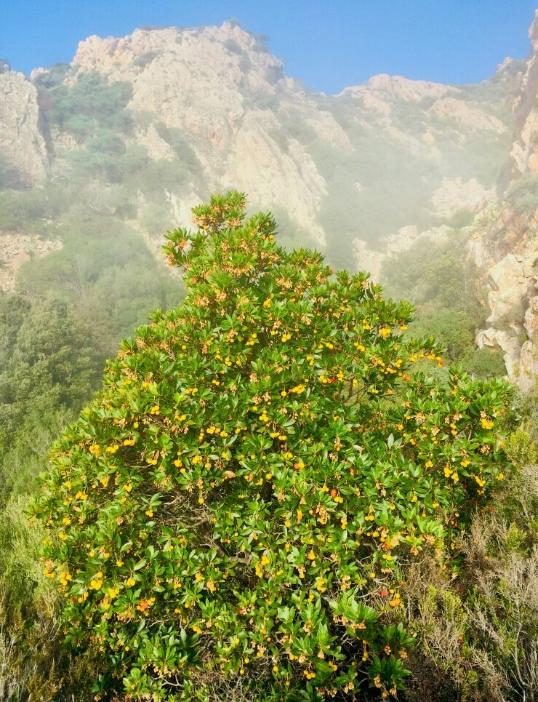
Recognised by awards: Silver at Biolmiel Bologna 2017 and Great Taste 2020 (London).
The honey is harvested in autumn (November) — a challenging seasonal window makes it rare and prized. It is often dubbed a gourmet honey that “satisfies the most demanding palate”.
Exceptional Chemical & Antioxidant Profile
- Contains very high total phenolic content (~1,170 mg GAE/kg) and antioxidant activity — placing it among the most powerful antioxidant honeys.
- Predominant phenolic compound is homogentisic acid (HGA), making up to 50–60% of the total phenols — known for LDL protection, oxidative stress reduction, and radical scavenging.
- Also rich in flavonoids and acids (ellagic, quercitrin, p-coumaric, rutin), with impressive antimicrobial, anti-inflammatory, and anti-allergic properties.
High in trace elements like potassium, calcium, magnesium, iron, and sodium — nutritionally richer than many blossom honeys.
Demonstrates powerful antibacterial, antiviral, and immunomodulating effects; used traditionally for wound care, throat soothing, digestive relief, and even anti-thrombotic support (due to coumarins). Ongoing research explores colon-cancer cell cytotoxicity, with Hungarian lab evidence suggesting comparable efficacy to Manuka honey in preventing ROS-mediated DNA damage.
Tasting Profile of Greek Strawberry Tree honey
- Color & Texture: varies from dark amber to light brown when crystallised; texture is thick, creamy, and often compact due to rapid crystallisation.
- Aroma: strong and pungent — notes of ivy, bitter herbs, coffee grounds, burnt leather, cocoa bean, rhubarb, and gentian.
- Flavour: bold bitter-sweet taste; begins sweet but quickly shifts to intense bitterness with smoky, coffee-like notes.
- Mouthfeel: dense, resinous, and lingering — leaves a long, somewhat astringent finish.
Pairing Suggestions
| 🧀 Cheese | Excellent with strong sheep cheeses like Pecorino, mild goat cheese, or ricotta — the honey’s bitterness balances creamy fat and saltiness. |
| ☕ Beverages | Ideal companion for coffee or bitter herbal infusions—enhances depth without overpowering aroma. |
| 🥗 Savory & Appetisers | Use with Pane Carasau (Sardinian flatbread), bitter vegetables like radicchio or artichoke, or alongside cured meats for contrast in flavour. |
| 🍨 Desserts | Great drizzled over ice cream, yogurt, or white chocolate mousse to introduce a bitter-sweet complexity. |
| 🍶 Functional Use | Often consumed on its own or in detox teas, and historically used for its diuretic and anti-asthmatic benefits. |
